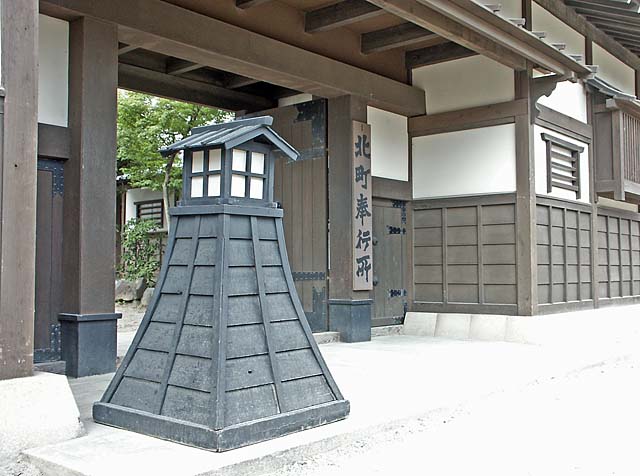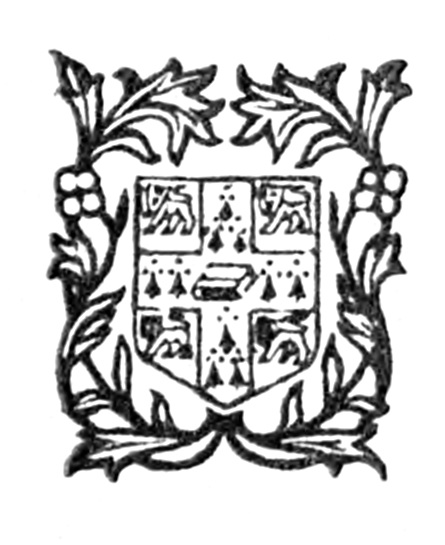|
Haneda Bugyō
were officials of the Tokugawa shogunate in Edo period Japan.Beasley, William G. (1955). ''Select Documents on Japanese Foreign Policy, 1853–1868'', p. 329. Conventional interpretations have construed these Japanese titles as "commissioner", "overseer" or "governor". This office was created in 1842. This '' bakufu'' title identifies an official responsible for administration of the port of Haneda and foreign trade in the area. The numbers of men holding the title concurrently would vary over time. In February 1854, Commodore Matthew C. Perry sailed unimpeded into Edo harbor and anchored his American squadron of ships off the port of Haneda.Naito, Akira ''et al.'' (2003) ''Edo, the City that Became Tokyo: An Illustrated History'', p. 207./ref> List of Haneda ''bugyō'' : See also * Bugyō Notes References * Beasley, William G. (1955) ''Select Documents on Japanese Foreign Policy, 1853–1868''.London: Oxford University Press. RoutledgeCurzon.html" ;"title="eprinted b ... [...More Info...] [...Related Items...] OR: [Wikipedia] [Google] [Baidu] |
Tokugawa Shogunate
The Tokugawa shogunate (, Japanese 徳川幕府 ''Tokugawa bakufu''), also known as the , was the military government of Japan Japan ( ja, 日本, or , and formally , ''Nihonkoku'') is an island country in East Asia. It is situated in the northwest Pacific Ocean, and is bordered on the west by the Sea of Japan, while extending from the Sea of Okhotsk in the no ... during the Edo period from 1603 to 1868.Louis-Frédéric, Nussbaum, Louis-Frédéric. (2005)"''Tokugawa-jidai''"in ''Japan Encyclopedia'', p. 978.Nussbaum"''Edo-jidai''"at p. 167. The Tokugawa shogunate was established by Tokugawa Ieyasu after victory at the Battle of Sekigahara, ending the civil wars of the Sengoku period following the collapse of the Ashikaga shogunate. Ieyasu became the ''shōgun,'' and the Tokugawa clan governed Japan from Edo Castle in the eastern city of Edo (Tokyo) along with the ''daimyō'' lords of the ''samurai'' class.Nussbaum"Tokugawa"at p. 976. The Tokugawa shogunate organized ... [...More Info...] [...Related Items...] OR: [Wikipedia] [Google] [Baidu] |
Edo Period
The or is the period between 1603 and 1867 in the history of Japan, when Japan was under the rule of the Tokugawa shogunate and the country's 300 regional ''daimyo''. Emerging from the chaos of the Sengoku period, the Edo period was characterized by economic growth, strict social order, isolationist foreign policies, a stable population, perpetual peace, and popular enjoyment of arts and culture. The period derives its name from Edo (now Tokyo), where on March 24, 1603, the shogunate was officially established by Tokugawa Ieyasu. The period came to an end with the Meiji Restoration and the Boshin War, which restored imperial rule to Japan. Consolidation of the shogunate The Edo period or Tokugawa period is the period between 1603 and 1867 in the history of Japan, when Japan was under the rule of the Tokugawa shogunate and the country's regional ''daimyo''. A revolution took place from the time of the Kamakura shogunate, which existed with the Tennō's court, to th ... [...More Info...] [...Related Items...] OR: [Wikipedia] [Google] [Baidu] |
Bakufu
, officially , was the title of the military dictators of Japan during most of the period spanning from 1185 to 1868. Nominally appointed by the Emperor, shoguns were usually the de facto rulers of the country, though during part of the Kamakura period, shoguns were themselves figureheads, with real power in hands of the Shikken of the Hōjō clan. The office of shogun was in practice hereditary, though over the course of the history of Japan several different clans held the position. The title was originally held by military commanders during Heian period in the eighth and ninth centuries. When Minamoto no Yoritomo gained political ascendency over Japan in 1185, the title was revived to regularize his position, making him the first shogun in the usually understood sense. The shogun's officials were collectively referred to as the ; they were the ones who carried out the actual duties of administration, while the Imperial court retained only nominal authority.Beasley, William G. ... [...More Info...] [...Related Items...] OR: [Wikipedia] [Google] [Baidu] |
Ōta, Tokyo
is a special ward located in Tokyo Metropolis, Japan. In English, it is often called Ōta City. , the ward has an estimated population of 716,413, with 379,199 households and a population density of 12,048.65 persons per km2. The total area is 59.46 km2, the largest of the special wards. Ōta's hub is situated around the two stations and , where the Ōta Ward Office and central Post Office can be found. Districts and neighborhoods ;Former Ōmori Ward * Chidori * Chūō * Den'enchōfu * Den'enchōfuhon-chō * Den'enchōfuminami * Higashimagome * Higashimine-chō * Higashiyukigaya * Ikegami * Ishikawamachi * Kamiikedai * Kitamagome * Kitamine-chō * Kitasenzoku * Kugahara * Minamikugahara * Minamimagome * Minamisenzoku * Minamiyukigaya * Nakaikegami * Nakamagome * Nishimagome * Nishimine-chō * Ōmorihigashi * Ōmorihonchō * Ōmorikita * Ōmoriminami * Ōmorinaka * Ōmorinishi * San'nō * Unoki * Yukigayaōtsuka-chō ;Former Kamata Ward * Haginaka * Haneda * Haned ... [...More Info...] [...Related Items...] OR: [Wikipedia] [Google] [Baidu] |
Matthew C
Matthew may refer to: * Matthew (given name) * Matthew (surname) * ''Matthew'' (ship), the replica of the ship sailed by John Cabot in 1497 * ''Matthew'' (album), a 2000 album by rapper Kool Keith * Matthew (elm cultivar), a cultivar of the Chinese Elm ''Ulmus parvifolia'' Christianity * Matthew the Apostle, one of the apostles of Jesus * Gospel of Matthew The Gospel of Matthew), or simply Matthew. It is most commonly abbreviated as "Matt." is the first book of the New Testament of the Bible and one of the three synoptic Gospels. It tells how Israel's Messiah, Jesus, comes to his people and ..., a book of the Bible See also * Matt (given name), the diminutive form of Matthew * Mathew, alternative spelling of Matthew * Matthews (other) * Matthew effect * Tropical Storm Matthew (other) {{disambiguation ... [...More Info...] [...Related Items...] OR: [Wikipedia] [Google] [Baidu] |
Bugyō
was a title assigned to ''samurai'' officials during the feudal period of Japan. ''Bugyō'' is often translated as commissioner, magistrate, or governor, and other terms would be added to the title to describe more specifically a given official's tasks or jurisdiction. Pre-Edo period In the Heian period (794–1185), the post or title of ''bugyō'' would be applied only to an official with a set task; once that task was complete, the officer would cease to be called ''bugyō''. However, in the Kamakura period (1185–1333) and later, continuing through the end of the Edo period (1603–1868), posts and title came to be created on a more permanent basis.Kinihara, Misako''The Establishment of the Tosen-bugyō in the Reign of Ashikaga Yoshinori'' (唐船奉行の成立 : 足利義教による飯尾貞連の登用) Tokyo Woman's Christian University. ''Essays and S.tudies''. Abstract. Over time, there came to be 36 ''bugyō'' in the bureaucracy of the Kamakura shogunate. In 14 ... [...More Info...] [...Related Items...] OR: [Wikipedia] [Google] [Baidu] |
Oxford University Press
Oxford University Press (OUP) is the university press of the University of Oxford. It is the largest university press in the world, and its printing history dates back to the 1480s. Having been officially granted the legal right to print books by decree in 1586, it is the second oldest university press after Cambridge University Press. It is a department of the University of Oxford and is governed by a group of 15 academics known as the Delegates of the Press, who are appointed by the vice-chancellor of the University of Oxford. The Delegates of the Press are led by the Secretary to the Delegates, who serves as OUP's chief executive and as its major representative on other university bodies. Oxford University Press has had a similar governance structure since the 17th century. The press is located on Walton Street, Oxford, opposite Somerville College, in the inner suburb of Jericho. For the last 500 years, OUP has primarily focused on the publication of pedagogical texts a ... [...More Info...] [...Related Items...] OR: [Wikipedia] [Google] [Baidu] |
RoutledgeCurzon
Routledge () is a British multinational publisher. It was founded in 1836 by George Routledge, and specialises in providing academic books, journals and online resources in the fields of the humanities, behavioural science, education, law, and social science. The company publishes approximately 1,800 journals and 5,000 new books each year and their backlist encompasses over 70,000 titles. Routledge is claimed to be the largest global academic publisher within humanities and social sciences. In 1998, Routledge became a subdivision and imprint of its former rival, Taylor & Francis Group (T&F), as a result of a £90-million acquisition deal from Cinven, a venture capital group which had purchased it two years previously for £25 million. Following the merger of Informa and T&F in 2004, Routledge became a publishing unit and major imprint within the Informa "academic publishing" division. Routledge is headquartered in the main T&F office in Milton Park, Abingdon, Oxfordshire and a ... [...More Info...] [...Related Items...] OR: [Wikipedia] [Google] [Baidu] |
Cambridge University Press
Cambridge University Press is the university press of the University of Cambridge. Granted letters patent by Henry VIII of England, King Henry VIII in 1534, it is the oldest university press in the world. It is also the King's Printer. Cambridge University Press is a department of the University of Cambridge and is both an academic and educational publisher. It became part of Cambridge University Press & Assessment, following a merger with Cambridge Assessment in 2021. With a global sales presence, publishing hubs, and offices in more than 40 Country, countries, it publishes over 50,000 titles by authors from over 100 countries. Its publishing includes more than 380 academic journals, monographs, reference works, school and university textbooks, and English language teaching and learning publications. It also publishes Bibles, runs a bookshop in Cambridge, sells through Amazon, and has a conference venues business in Cambridge at the Pitt Building and the Sir Geoffrey Cass Spo ... [...More Info...] [...Related Items...] OR: [Wikipedia] [Google] [Baidu] |
Kodansha
is a Japanese privately-held publishing company headquartered in Bunkyō, Tokyo. Kodansha is the largest Japanese publishing company, and it produces the manga magazines '' Nakayoshi'', '' Afternoon'', '' Evening'', '' Weekly Shōnen Magazine'' and '' Bessatsu Shōnen Magazine'', as well as the more literary magazines '' Gunzō'', '' Shūkan Gendai'', and the Japanese dictionary '' Nihongo Daijiten''. Kodansha was founded by Seiji Noma in 1910, and members of his family continue as its owners either directly or through the Noma Cultural Foundation. History Seiji Noma founded Kodansha in 1910 as a spin-off of the ''Dai-Nippon Yūbenkai'' (, "Greater Japan Oratorical Society") and produced the literary magazine '' Yūben'' () as its first publication. The name ''Kodansha'' (taken from '' Kōdan Club'' (), a now-defunct magazine published by the company) originated in 1911 when the publisher formally merged with the ''Dai-Nippon Yūbenkai''. The company has used its current leg ... [...More Info...] [...Related Items...] OR: [Wikipedia] [Google] [Baidu] |
Government Of Feudal Japan
A government is the system or group of people governing an organized community, generally a state. In the case of its broad associative definition, government normally consists of legislature, executive, and judiciary. Government is a means by which organizational policies are enforced, as well as a mechanism for determining policy. In many countries, the government has a kind of constitution, a statement of its governing principles and philosophy. While all types of organizations have governance, the term ''government'' is often used more specifically to refer to the approximately 200 independent national governments and subsidiary organizations. The major types of political systems in the modern era are democracies, monarchies, and authoritarian and totalitarian regimes. Historically prevalent forms of government include monarchy, aristocracy, timocracy, oligarchy, democracy, theocracy, and tyranny. These forms are not always mutually exclusive, and mixed govern ... [...More Info...] [...Related Items...] OR: [Wikipedia] [Google] [Baidu] |




.jpg)


.jpg)